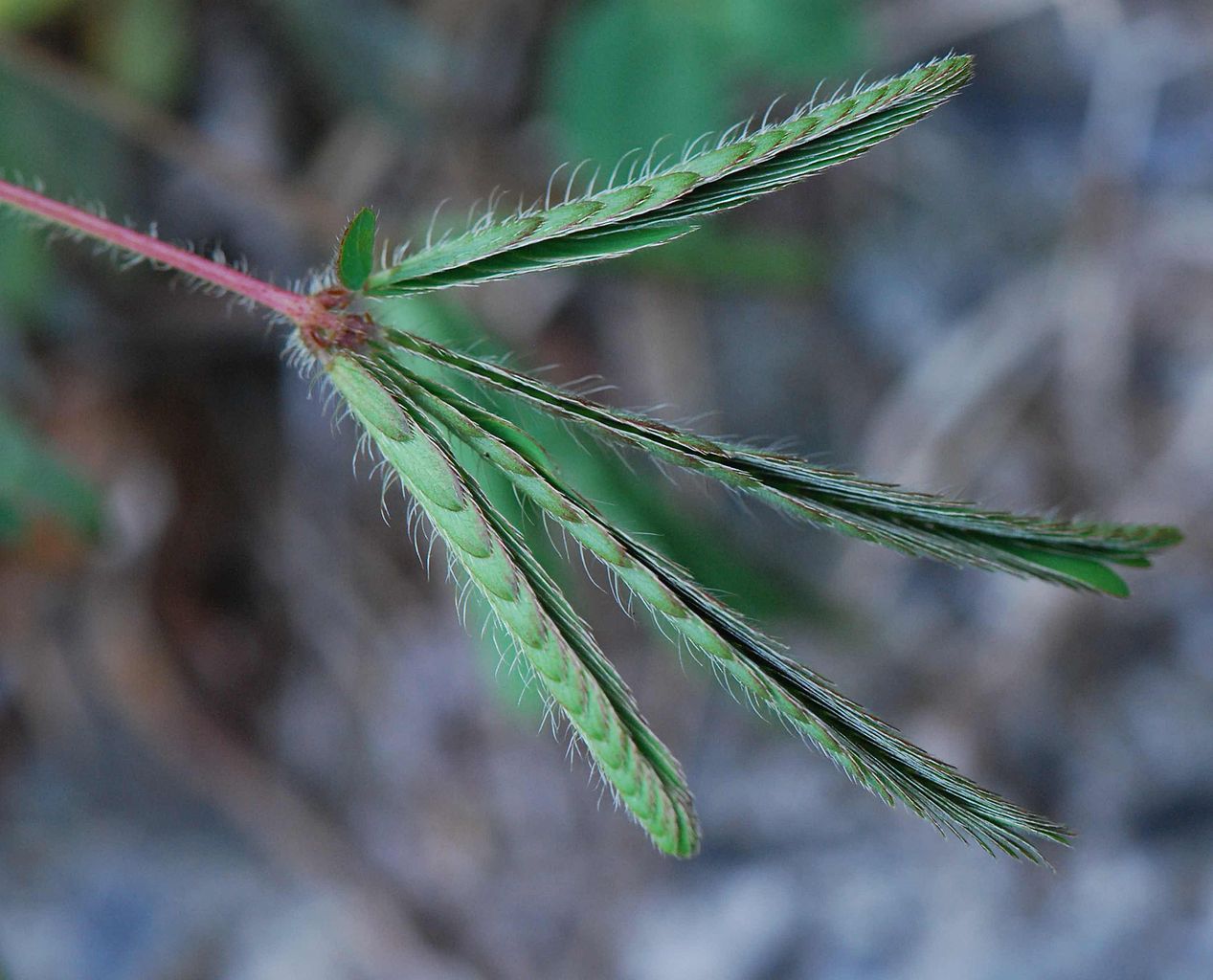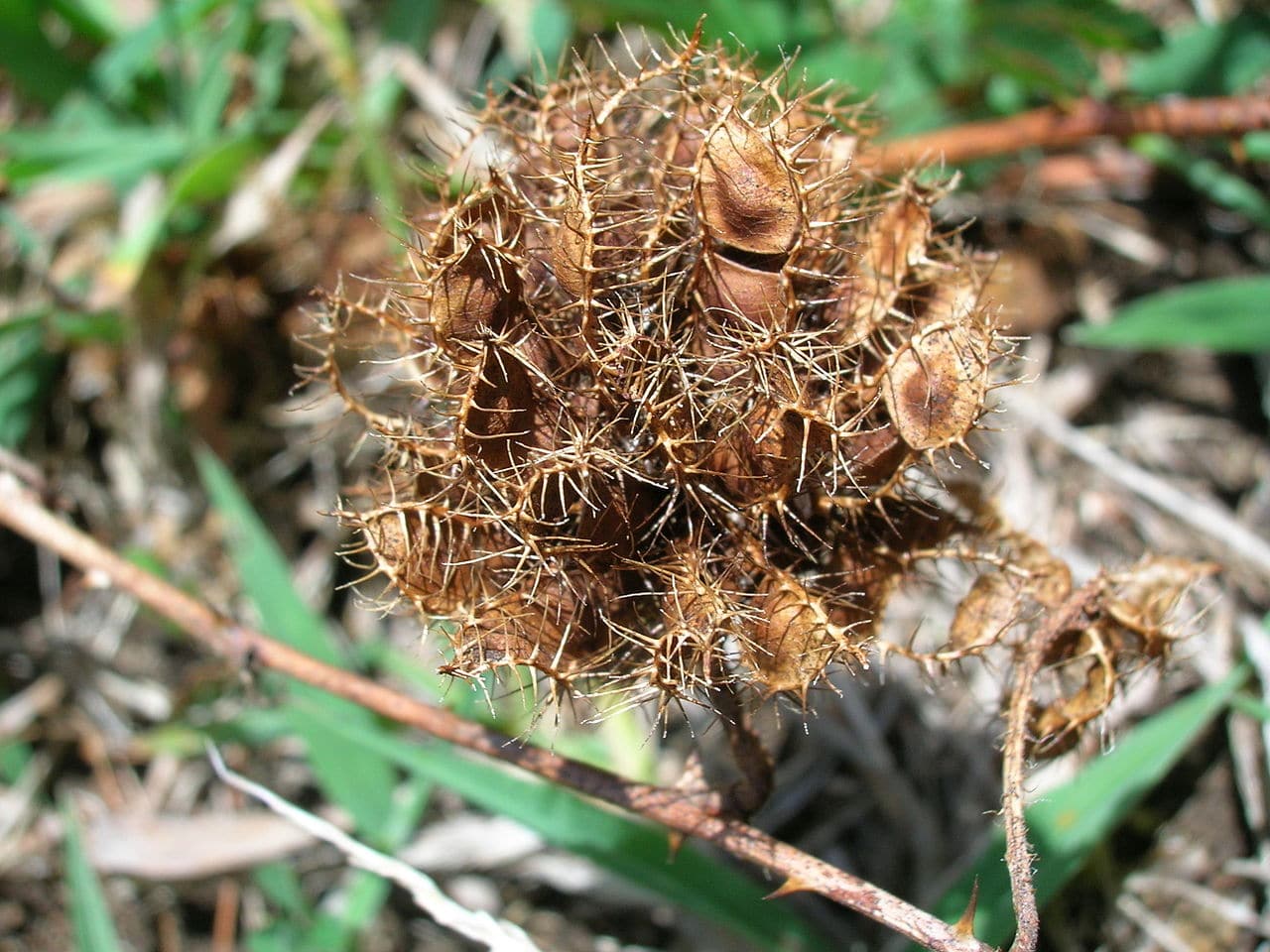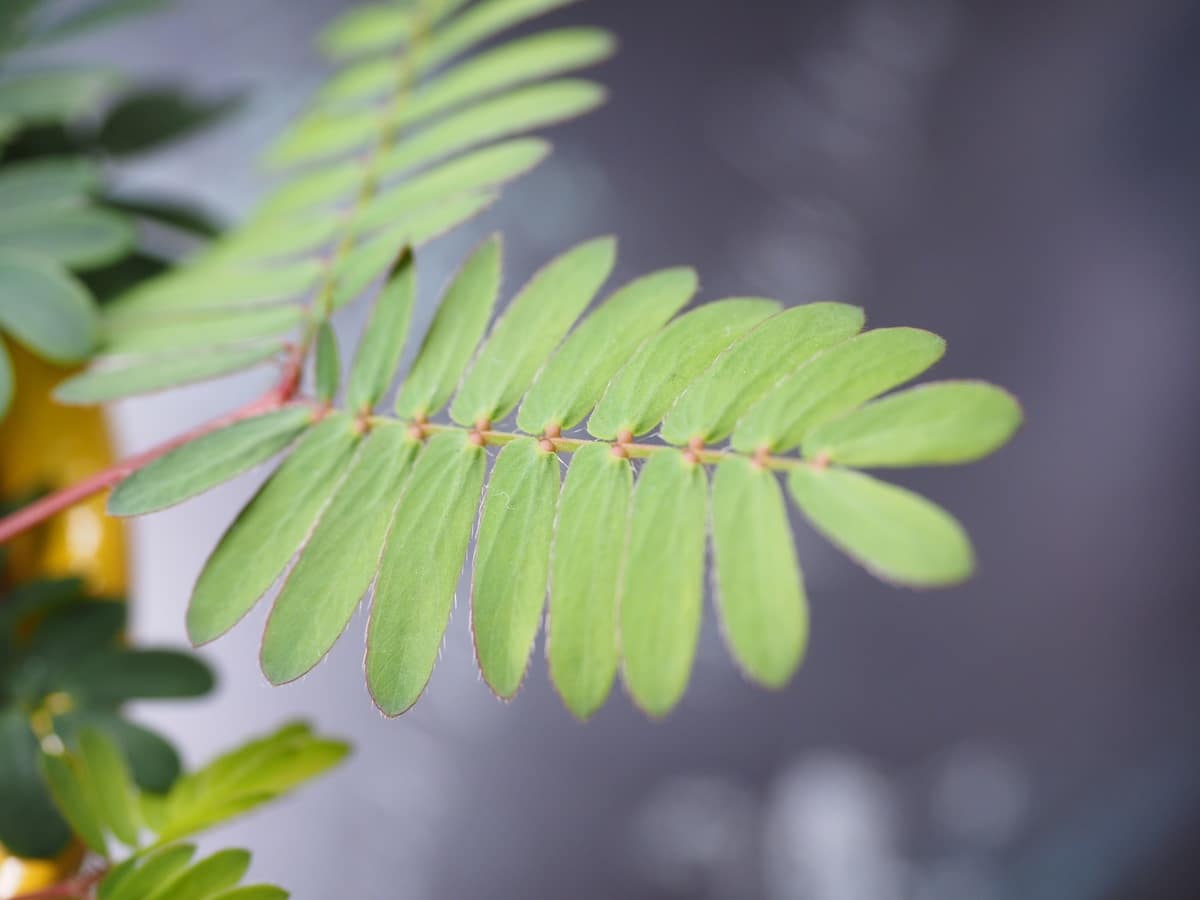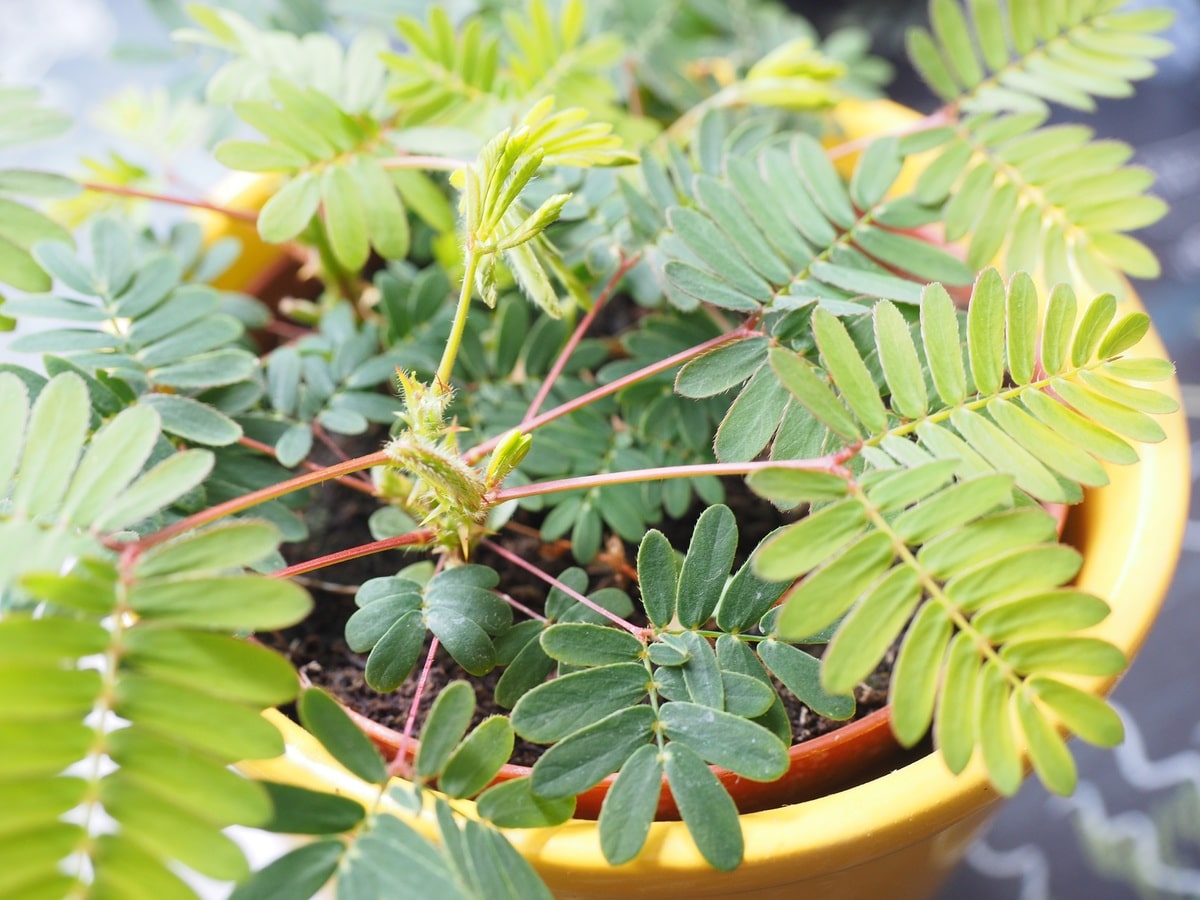
Image - Wikimedia / H. Zell
Surely it has ever happened to you that, walking quietly through a nursery, your hand has brushed against some very interesting plant: the Mimosa pudica. This curious plant species is the clear example that plants also move, and some, like it, do it so fast that they attract our attention.
But how do you take care of it? Discover everything your Mimosa needs to be splendid.
Origin and characteristics of Mimosa pudica
La Mimosa pudica It is native to tropical America, where it grows on the roadsides. In some areas it has even been considered invasive, since has a very high germination rate and a fairly fast growth rate, which prevents other plant species from growing. It is popularly known as sensitive mimosa, nometoques, roost, poppy (not to be confused with Papaver somniferum), sleepy or moriviví.
It is also a herbaceous perennial, but in temperate-cold regions it is grown as an annual because is very sensitive to cold (temperatures below 10ºC can seriously affect it), although it can also be kept as an indoor plant in a room where there is a lot of light.
As it has a rather reduced height -no more than 100cm-, it can be potted. This, in addition, will make it easier for you to have to move it if you want to change its location. It blooms during spring and summer, producing little pink, miniature ballerina pom-pom-like flowers with a diameter of about two centimeters. The seeds are rounded, less than 0,5cm, and brown.
Their life expectancy is about 5 years, less if the weather is not good (that is, if it is cold).
What is the mimosa movement called?

Image - Wikimedia / Pancrat
If for something the sensitive mimosa It is because of the movement that their leaves make when they touch. This movement is known as nytinastia, and is caused by changes in turgor in the cells at the base of their petiole. When this turgor occurs in the flexor cells, the leaves will open, but if it occurs in the extensor cells, they will close.
Closing or opening the blades requires considerable energy expenditure, so there is no need to play with it.
What are the care of the sensitive mimosa?
If you dare to have a copy, we recommend that you provide it with the following care:
Location
It is a plant that needs a lot of light to grow, therefore…:
- Interior: It will be fine if it is kept in a bright room and away from drafts.
- Body exterior:: the ideal would be to have it in full sun, but if it cannot be, then you should know that it adapts reasonably well in exposures with partial shade or semi-shade.
Irrigation
Moderate to frequent. During hot and dry summers it may be necessary to water an average of 3 times a week, but the rest of the year one or two weekly waterings will suffice.
If you have doubts, check the humidity of the soil before proceeding to re-moisten it, as puddling and excess moisture damage its roots.
Earth
- Flower pot: fill with mulch, coconut fiber, or if you prefer, with a mixture of universal substrate with perlite in equal parts. The container must have holes in its base through which the water can escape.
- Garden: it is not very demanding, but it likes soils rich in organic matter, and well drained.
Subscriber
It is interesting to fertilize the sensitive mimosa plant with a liquid organic fertilizer, such as guano, following the instructions specified on the packaging. from spring to summer. In this way, you will get it to grow healthy, have excellent development and, in addition, have a better chance of surviving cold winters (as long as it is protected from frost).
Multiplication

Image - Wikimedia / Forest & Kim Starr
As we said, it is one of the ornamental herbaceous plants that has the least difficulty to germinate, and one of the least needed to do so. The most suitable time for sowing is spring, but you can also do it in summer. Thus, you need an envelope of seeds - for sale in nurseries or in agricultural stores -, a seedbed and black peat with perlite.
Next, you just have to fill the seedbed, place the seeds on the surface and cover them with a thin layer of substrate. Keep the peat slightly moist and in 2 months you can have your own little plants de Mimosa pudica.
Easy right?
Pruning
Don't need itAlthough if you see that it has some stems with dry leaves, remove them with previously disinfected scissors. You can also cut off the withered flowers from your poppy Whenever necessary.
Planting or transplanting time
En springWhen the minimum temperature is at least 15 degrees Celsius, it will be a good time to plant it in the garden.
If you have it in a pot, transplant it when you see the roots come out of the drainage holes, or if it has already occupied the entire container.
Rusticity
Does not resist the cold. The minimum temperature that it holds is 10 degrees Celsius. Therefore, if your area falls more, protect it at home or in a greenhouse until spring returns.
This plant turns out to be perfect to have on balconies, patios, terraces ... As a table plant, for example, it can be very original and decorative.

Do you have any Mimosa pudica?

good day
We have just acquired a small mimosa (not in the best time since I just read that they do not like the cold) I have several doubts, they told me that it is an indoor plant and so we have it, but in my house the sun does not enter much And also in winter if it is cold, is it advisable to use it in a window or a door where direct sunlight enters when it opens and closes? and how often do you have to add water? THANKS A LOT
Hi, Diana.
If it is very cold in your area, it is better to keep it indoors, near a window.
Water it once or twice a week at most.
A greeting.
good morning
I just got a small mimosa and I have the doubt if it affects them that there are many little plants in a single pot
Hi yessenia.
No, if you change it to a bigger pot - about 3 cm more - no.
But do not touch it a lot, because the act of opening and closing the leaves is a huge energy expenditure and you could die from it.
A greeting.
Hello, I would like to know how much the sun benefits you, or do you need a space where it gives you shade?
Hello Sofia.
Mimosa pudica grows in full sun in its natural habitat, but it can be in semi-shade as long as they have more light than shade.
A greeting.
A week ago I bought a mimosa in a somewhat small pot, and today it has dry leaves, I have it in a small pot in front of the door so if it has light, even if it is not direct, will there be any way to save it?
Hi Cinthya.
How often do you water it? Dry leaves are usually due to lack of water, but if they are the ones that are lower, it is more due to excess.
Greetings.
Hello Monica!
A month ago I bought a small mimosa, as the pot was very small, I decided to change it to a larger one and as I was told where I bought it that it could not be given direct sun, I have had it in pure shade and at the moment it is almost withered 100%, what can I do to save her? Can you please support me.
Thank you!
Hi Guadalupe.
This plant needs light, so I recommend that you move it to an area where it is in semi-shade (it would not be good if it gave it direct sun, since it would burn, but it is necessary to avoid putting it in total shade because it cannot grow well under those conditions).
Regards!
Thank you very much Monica, I will follow your advice, hoping she will recover soon.
Regards!
Luck !!
Hello, I have a mimosa pudica, this morning I found it with almost all the dried leaves, what can happen to it, thank you.
Hello Juan Carlos.
Have you recently had it? Does it get direct sun? Is that if so, it is surely burning. And in that case it would have to be put in a protected place, in semi-shade.
Another thing, when watering do you wet the leaves? If so, it is better that you do not do it because if the sun hits it, it also burns.
The irrigation will be done about 3 times a week now in summer. When the temperatures begin to drop, it will be watered less.
Regards!
I took it to Spain… .. I emigrated… .. here it grows like crazy …… now it's about 80 cm and it's full of pink flowers… .. what I see now is that the bunches of seeds are coming in… that's great… and great ... that's how I can start distributing ... I think it's a very pretty plant, very happy with it
Hi Haw.
We are glad that it is growing so well. Enjoy it 🙂